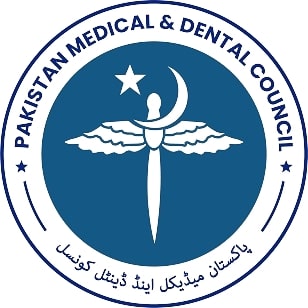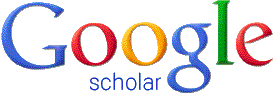A COMPARISON OF EIDETIC IMAGE THERAPY WITH COGNITIVE BEHAVIOR THERAPY FOR TREATING DEPRESSIVE AND ANXIETY DISORDERS IN ADULTS: A RANDOMIZED CONTROLLED TRIAL
DOI:
https://doi.org/10.59058/jaimc.v20i3.67Keywords:
Eidetic image therapy, Cognitive behavior therapy, depression, anxiety, randomized controlled trial.Abstract
Background & Objectives: Depression and anxiety are common mental health disorders around the world. This study aims to examine efficacy of eidetic image therapy in comparison to cognitive behavior therapy for treating depressive and anxiety disorders, and to compare the patients' dropout ratio in these therapies.
Methods: This was a randomized controlled trial conducted from January through June 2021 in psychiatry department of Sir Ganga Ram hospital Lahore. Using DSM-5 diagnostic criteria, 60 adult patients with depressive and anxiety disorders were recruited and were randomly and equally assigned to experimental (eidetic image therapy) and control (cognitive behavior therapy) groups. These participants received respective therapies and followed. Beck Depression Inventory and Beck Anxiety Inventory were used at baseline and after conducting five therapy sessions. Paired t-test was used to compare the mean difference and p-value of <0.05 was considered statistically significant.
Results: Descriptive analysis demonstrated a major difference in dropout numbers of eidetic image therapy (9; 30 %) and cognitive behavior therapy (25; 83 %). The efficacy of both interventions was statistically incomparable due to this excessive number of dropouts in control group. However, eidetic image therapy showed a significant difference (p<0.001) in pre and post therapy ratings; each patient exhibited a marked decline in depression/anxiety symptoms after taking 5 sessions.
Conclusion: Eidetic imagery is a promising therapeutic utility for depressive and anxiety disorders. Cognitive behavior therapy is also an effective treatment methodology but this narrative is based on analysis of few cases.
References
Bellos S, Skapinakis P, Rai D, Zitko P, Araya R, Lewis G, et al. Cross-cultural patterns of the association bet- ween varying levels of alcohol consumption and the common mental disorders of depression and anxiety: secondary analysis of the WHO Collaborative Study on Psychological Problems in General Health Care. Drug Alcohol Depend. 2013;133(3):825-31.
World Health Organization. Depression. 2020. Retrie- ved from: https://www.who.int/news-room/fact-sheets/ detail/depression
World Health Organization. Policy options on mental health: a WHO-Gulbenkian mental health platform collaboration. 2017.
Ahmed B, Enam SF, Iqbal Z, Murtaza G, Bashir S. Depression and anxiety: a snapshot of the situation in Pakistan. Int J Neurosci. 2016;4(2):32.
Beck AT. Depression: Clinical, Experimental and TheoreticalAspects. NewYork: Brandon House. 1967.
Beck AT, Emery G, Greenberg RL. Anxiety disorders and phobias: A cognitive perspective. Basic books. 2005.
Tang TZ, DeRubeis RJ. Reconsidering rapid early response in cognitive behavioral therapy for depression. Clinical Psychology: Science and Practice. 1999; 6(3): 283-288.
Naeem F, Gobbi M, Ayub M, Kingdon D. Psycholo- gists experience of cognitive behaviour therapy in a developing country: a qualitative study from Pakistan. Int J Ment Health Syst. 2010;4(1):1-9.
Naeem F, Phiri P, Munshi T, Rathod S, Ayub M, Gobbi M, et al. Using cognitive behaviour therapy with South Asian Muslims: Findings from the culturally sensitive CBT project. Int Rev Psychiatry. 2015; 27(3): 233-46.
Longmore RJ, Worrell M. Do we need to challenge thoughts in cognitive behavior therapy?. Clin Psychol Rev. 2007;27(2):173-87.
Ahsen A. Eidetic psychotherapy: a short introduction. Nai Matbooat; 1965.
Ahsen A. Basic concepts in eidetic psychotherapy. New York: Eidetic Publishing House. 1968.
Ahsen A. Psycheye: Self-analytic consciousness: A basic introduction to the natural self-analytic images of consciousness: Eidetics. Brandon House. 1977.
Ahsen A. Trojan horse: Image in psychology, art, lite- rature and politics. New York: Brandon House. 1984.
Walrond-Skinner S. Dictionary of psychotherapy.
London: Routledge & Kegan Paul. 1986.
Ahsen A. Psycheye: Self-analytic consciousness. New York: Brandon House. 1977.
Sheikh AA. Eidetic psychotherapy techniques. In Anees ASheikh (ed). Handbook of therapeutic imagery techniques. New York: Baywood Publishing Company, Inc. 2002;145-154.
Ahsen A. Age projection test: Short-term treatment of hysterias, phobias and other items. New York: Brandon House. 1988.
Hochman J. Brief image therapy. New York: Brandon House. 2007;31(½).
Ahsen A. Eidetic parents test and analysis: A practical guide to systematic and comprehensive analysis. New York: Eidetic Publishing House. 1972.
Diagnostic and statistical manual of mental disorders, (5th ed.). American Psychiatric Association. Washing- ton, DC: Author Agency. 2013.
Syed AA, Neelofur S, Moran A, O'Reilly G. Investi- gating the potential clinical utility of therapeutic tech- niques based on eidetic imagery as adapted by the Eidetic Model of Growth (EMG) for people with inte-llectual disability (ID). Heliyon. 2020; 6(10): e05115.
Kosslyn SM. Image and brain: The resolution of the imagery debate. MIT press. 1996.
Goebel R, Khorram‐Sefat D, Muckli L, Hacker H, Singer W. The constructive nature of vision: direct evidence from functional magnetic resonance imaging studies of apparent motion and motion imagery. Eur J Neurosci. 1998;10(5):1563-73.
Holmes EA, Mathews A. Mental imagery in emotion and emotional disorders. Clin Psychol Rev. 2010; 30 (3): 349-62.
Lipsky MJ, Kassinove H, Miller NJ. Effects of rational- emotive therapy, rational role reversal, and rational- emotive imagery on the emotional adjustment of community mental health center patients. J Consult Clin Psychol. 1980;48(3):366.
Tolin DF. Is cognitive–behavioral therapy more effec- tive than other therapies?: A meta-analytic review. Clin Psychol Rev. 2010;30(6):710-20.
Hofmann SG, Asnaani A, Vonk IJ, Sawyer AT, Fang
A. The efficacy of cognitive behavioral therapy: A review of meta-analyses. Cognit Ther Res. 2012; 36(5):
Downloads
Published
How to Cite
Issue
Section
License
Copyright (c) 2023 JAIMC

This work is licensed under a Creative Commons Attribution 4.0 International License.
The articles published in this journal come under creative commons licence Attribution 4.0 International (CC BY 4.0) which allows to copy and redistribute the material in any medium or format Adapt — remix, transform, and build upon the material for any purpose, even commercially under following terms.
-
Attribution — You must give appropriate credit, provide a link to the license, and indicate if changes were made. You may do so in any reasonable manner, but not in any way that suggests the licensor endorses you or your use.
- No additional restrictions — You may not apply legal terms or technological measures that legally restrict others from doing anything the license permits.
The editorial board of the Journal strives hard for the authenticity and accuracy of the material published in the Journal. However, findings and statements are views of the authors and do not necessarily represent views of the Editorial Board. Many software like (Google Maps, Google Earth, Biorender (free version)) restricts the free distribution of materials prepared using these softwares. Therefore, authors are strongly advised to check the license/copyright information of the software used to prepare maps/images. In case of publication of copyright material, the correction will be published in one of the subsequent issues of the Journal, and the authors will bear the printing cost.










